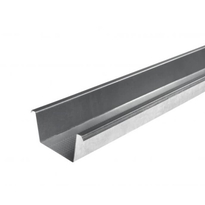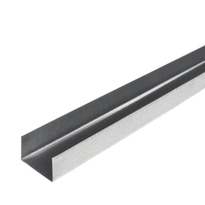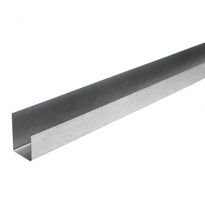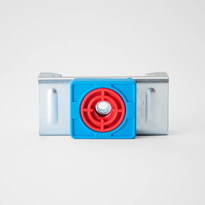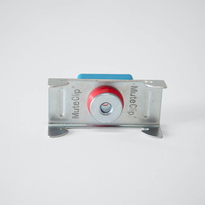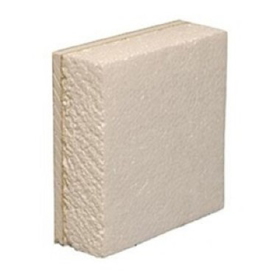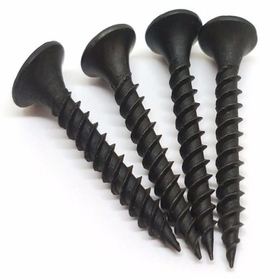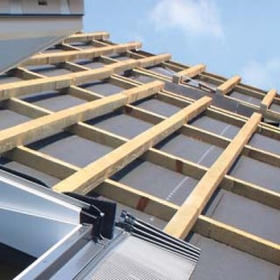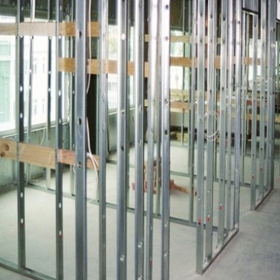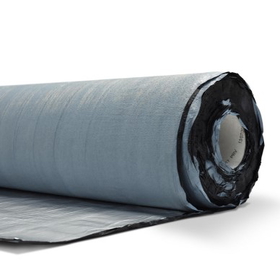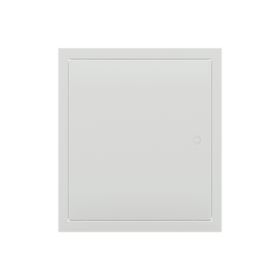MF Ceiling Systems
Similar Categories
MF Ceiling Systems: A Guide to Choosing and Installing the Best Solution for Your Project
If you are looking for a versatile, cost-effective, and easy-to-install ceiling system for your building project, you might want to consider MF ceiling systems. MF ceiling systems are metal framed suspended ceiling systems that can be used to create a variety of ceiling designs and finishes.
They are suitable for both domestic and commercial applications and can be used to conceal services, improve acoustics, and enhance thermal performance.
In this article, we will explain what MF ceiling systems are, how they work, what benefits they offer, and how to choose and install the best MF ceiling system for your project.
What are MF ceiling systems?
MF ceiling systems are composed of three main components: MF5 ceiling furring channels, MF7 primary support channels, and MF6A edge trim perimeter channels.
These components are made of galvanized steel and are designed to form a rigid and durable framework that supports the ceiling boards.
The ceiling boards can be made of plasterboard, mineral wool, or any other suitable material, depending on the desired finish and performance.
How do MF ceiling systems work?
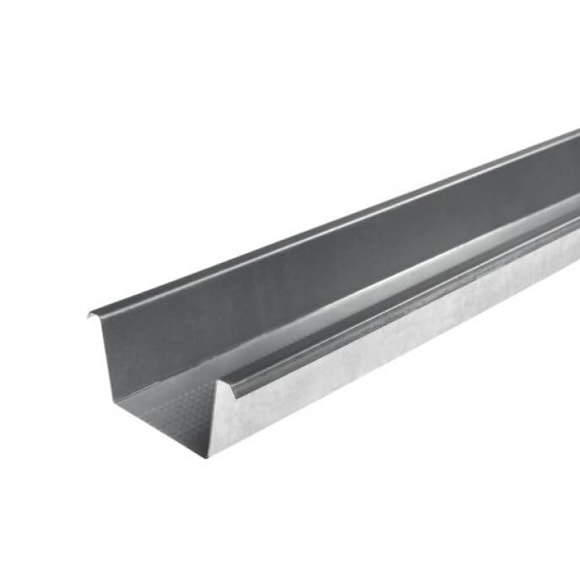 MF ceiling systems work by creating a suspended ceiling below the existing soffit or roof structure. The MF7 primary support channels are fixed to the soffit using hangers, such as drop rods, angle brackets, or wire hangers.
MF ceiling systems work by creating a suspended ceiling below the existing soffit or roof structure. The MF7 primary support channels are fixed to the soffit using hangers, such as drop rods, angle brackets, or wire hangers.
The MF5 ceiling furring channels are then clipped onto the MF7 primary support channels at right angles, forming a grid pattern. The MF6A edge trim perimeter channels are fixed to the walls around the perimeter of the ceiling, providing a neat and secure edge.
The ceiling boards are then fixed to the MF5 ceiling furring channels using screws or nails, creating a smooth and seamless surface. The ceiling boards can be taped and jointed, skimmed, or painted, depending on the desired finish. Alternatively, the ceiling boards can be left exposed, creating an industrial or minimalist look.
What are the benefits of MF ceiling systems?
MF ceiling systems offer many benefits for both builders and occupants, such as:
- Versatility: MF ceiling systems can be used to create any shape and size of the ceiling, from simple flat ceilings to complex curved or vaulted ceilings. They can also accommodate different ceiling heights, slopes, and angles, as well as openings for lights, vents, or speakers. MF ceiling systems can be used to create a variety of ceiling finishes, from smooth and plain to textured and decorative.
- Cost-effectiveness: MF ceiling systems are relatively inexpensive compared to other ceiling systems, as they use less material and labour. They also reduce the need for additional insulation, as they create an air gap between the ceiling and the soffit, which improves the thermal performance of the building. MF ceiling systems can also lower energy costs, as they reduce the volume of the room that needs to be heated or cooled, and allow for better distribution of lighting and ventilation.
- Ease of installation: MF ceiling systems are easy to install, as they use standard components that are readily available and easy to handle. They also require minimal cutting and drilling, as they can be adjusted to fit any space. MF ceiling systems are lightweight and flexible, making them easy to transport and manoeuvre. They also require minimal maintenance, as they are resistant to corrosion, moisture, and fire.
- Performance: MF ceiling systems improve the performance of the building in terms of acoustics, thermal, and fire. MF ceiling systems can reduce the noise transmission between the ceiling and the soffit, as well as between adjacent rooms, by creating a sound barrier and absorbing sound waves. MF ceiling systems can also improve the thermal performance of the building, by creating an air gap that reduces heat loss or gain, and by allowing for the installation of additional insulation if needed. MF ceiling systems can also enhance the fire safety of the building, by creating a fire barrier and preventing the spread of flames and smoke.
How to choose and install the best MF ceiling system for your project?
To choose and install the best MF ceiling system for your project, you need to consider the following factors:
- Design: You need to decide on the shape, size, and finish of your ceiling, as well as the location and size of any openings for lights, vents, or speakers. You also need to consider the height and slope of your ceiling and the distance between the ceiling and the soffit. These factors will determine the type and quantity of components you need, as well as the layout and spacing of the grid.
- Components: You need to select the components that suit your design and performance requirements. You can choose from a range of MF5 ceiling furring channels, MF7 primary support channels, and MF6A edge trim perimeter channels, depending on the load, span, and depth of your ceiling. You also need to select the appropriate hangers, fixings, and accessories, such as clips, screws, nails, and tape. You can find all the components you need at our website Buy Insulation Online, we are a leading online supplier of insulation and building materials.
- Installation: You need to follow the installation instructions and guidelines provided by the manufacturer and the supplier. You also need to comply with the relevant building regulations and standards, such as BS 8212:1995, which specifies the code of practice for dry lining and partitioning using gypsum plasterboard. You also need to use the proper tools and equipment, such as a tape measure, a spirit level, a drill, a saw, a hammer, a screwdriver, and a ladder. You also need to wear the appropriate protective gear, such as gloves, goggles, and a mask.
To install the MF ceiling system, you need to follow these steps:
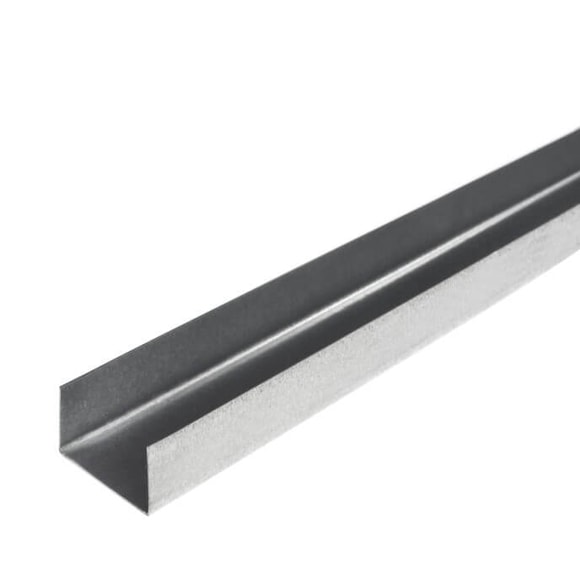 Mark the ceiling height and the perimeter of the ceiling on the walls, using a tape measure and a spirit level.
Mark the ceiling height and the perimeter of the ceiling on the walls, using a tape measure and a spirit level.- Fix the MF6A edge trim perimeter channels to the walls, using screws or nails, and aligning them with the marks.
- Mark the position and direction of the MF7 primary support channels on the soffit, using a tape measure and a spirit level. The MF7 primary support channels should be parallel to the shortest side of the ceiling, and spaced at equal intervals, depending on the span and load of the ceiling.
- Fix the hangers to the soffit, using screws or nails, and aligning them with the marks. The hangers should be perpendicular to the MF7 primary support channels, and spaced at equal intervals, depending on the depth and load of the ceiling.
- Attach the MF7 primary support channels to the hangers, using clips or screws, and adjust them to the desired ceiling height.
- Mark the position and direction of the MF5 ceiling furring channels on the MF7 primary support channels, using a tape measure and a spirit level. The MF5 ceiling furring channels should be perpendicular to the MF7 primary support channels, and spaced at equal intervals, depending on the span and load of the ceiling.
- Clip the MF5 ceiling furring channels onto the MF7 primary support channels, using clips or screws, and adjusting them to the desired ceiling slope or angle.
- Cut and fit the ceiling boards to the MF5 ceiling furring channels, using a saw and a hammer or a screwdriver, and leaving a gap of about 3 mm between the boards and the MF6A edge trim perimeter channels. The ceiling boards should be fixed to the MF5 ceiling furring channels using screws or nails, at intervals of about 300 mm along the edges and 230 mm in the field.
- Finish the ceiling boards, using tape and joint compound, skim coat, or paint, depending on the desired finish.
Conclusion
MF ceiling systems are a great choice for creating a versatile, cost-effective, and easy-to-install ceiling system for your building project. They offer many benefits in terms of design, performance, and installation, and can be used to create any shape and size of ceiling, with any finish and performance.
You can find all the components and accessories you need to install an MF ceiling system at our website Buy Insulation Online, we are a leading online supplier of insulation and building materials. You can visit our website today and browse our wide range of MF ceiling systems and other products.
Frequently Asked Questions
Q: How do I install an MF Ceiling System?
A: The installation of an MF Ceiling System involves assembling the metal framework components, including primary channels, furring channels, hangers, and fixings, according to the design requirements. It also includes the fitting of insulation and the installation of ceiling tiles to complete the suspended ceiling structure.
Q: Can MF Ceiling Systems be used for acoustic ceilings?
A: Yes, MF Ceiling Systems are suitable for acoustic ceiling installations. The metal framework provides a stable base for incorporating acoustic materials and ceiling tiles, allowing for the creation of effective acoustic ceiling solutions.
Q: What is the difference between MF5 and MF7 primary channels in MF Ceiling Systems?
A: The MF5 and MF7 primary channels in MF Ceiling Systems differ in their dimensions and load-bearing capacities. MF7 primary channels are designed for heavier loads and longer spans compared to MF5 channels. The choice between them depends on the specific requirements of the ceiling project.
Q: Do MF Ceiling Systems offer design flexibility?
A: Yes, MF Ceiling Systems provides design flexibility, allowing for the creation of tailored ceiling solutions. The adaptable metal framework system is fully compatible with various ceiling types and can accommodate specific design requirements for different projects.
Q: Can I use MF Ceiling Systems to upgrade an existing ceiling?
A: Yes, MF Ceiling Systems can be used to upgrade or replace existing ceilings. The adaptable metal framing system is fully compatible with different ceiling types, offering a solution for improving or modifying an already installed ceiling.
